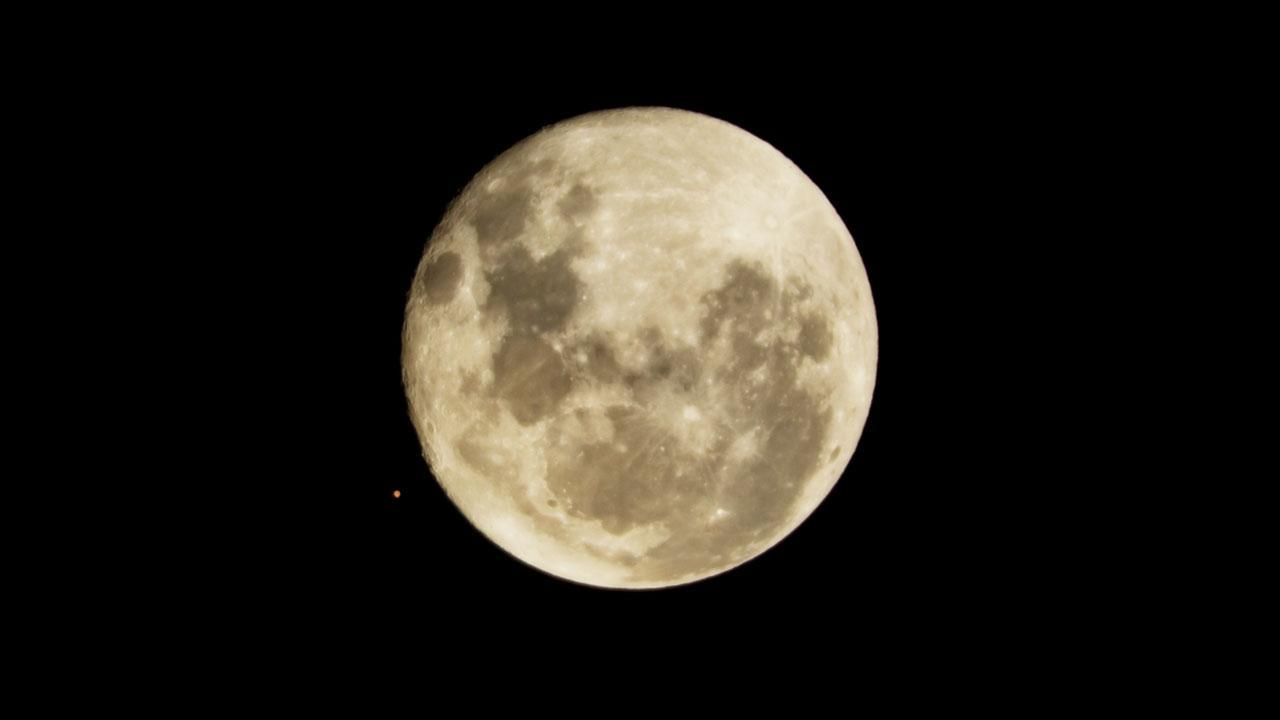During the phenomenon, the moon will hide Mars behind it — very much like an eclipse — on the evening of April 17

The last time the occultation was visible from India was in 2008. Representation pic
On the evening of April 17 this week, the moon will hide the planet Mars behind it, in a manner similar to when the moon hides the sun during a solar eclipse. This event, called an ‘occultation’ in astronomical parlance, will take place around 5.30 pm. The red planet will reappear from behind the moon in around an hour and a half.
ADVERTISEMENT
The event will be visible from only specific regions of the Earth and the time of the event will differ from place to place. The phenomenon itself is not a rare one, but for a given location, it is not very common either. The last occultation of Mars by the moon was visible in India on the evening of May 10, 2008.
“For India, this will be a mixed bag event,” said Director of Nehru Planetarium Arvind Paranjpye. “At locations in western India, the occultation will begin when the sun is still above the horizon. In Mumbai, the exact time for the event would be 5:31 pm, when the angle between the sun and the moon will be nearly 60°; yet, one must exercise utmost care when sighting the moon, either with the naked eye or through a pair of binoculars or a telescop.”
How to watch
Paranjpye explained that the first step for Mumbaikars is to spot the moon. “Go out at least half an hour before the event takes place and try to locate the moon. Look at its darker side and see if you can spot Mars to its east, which is towards the side away from its illuminated side i.e. the darker side of the moon. If the sun has already set in your location, mars will be easily visible. As you continue to watch, you will find the separation between Mars and the moon decreasing. Finally, you will see Mars going behind the moon.” He added, “Since Mars is distinctly visible to the naked eye, this event can be enjoyed without any optical aid. However, a pair of binoculars or a small telescope will be very useful.”
Paranjpye concluded that reappearance would be a little more difficult to catch because “people must know exactly from what point on the moon will Mars reappear.” However, people can email their observations to the Director, Nehru Planetarium, at director.np1977@gmail.com.
The daytime challenge
At locations where the sun is still above the horizon, viewers must see if they are able to spot Mars. “Over the last few years, many amateur astronomers have successfully photographed the moon while the sun is still above the horizon,” said Paranjpye. “It is a good exercise, therefore, to see if Mars can also be seen or at least photographed at that time. If you do spot the planet, do inform us about the time and location of your observation, and also let us know what instrument you used. This will be very useful scientific information.”
 Subscribe today by clicking the link and stay updated with the latest news!" Click here!
Subscribe today by clicking the link and stay updated with the latest news!" Click here!






